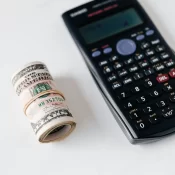
Reducing Food Waste to Save Money: A Simple Guide
It’s Saturday morning, and you’ve finally decided to tackle the dreaded task of cleaning out the fridge. As you rummage through the shelves, you pull out a wilted bag of spinach you forgot to use, a half-eaten box of strawberries that are starting to mold, and that leftover pasta you swore you’d eat but completely forgot about. Each item gets tossed into the trash, and suddenly, a sinking realization hits you—how much money are you literally throwing away each week?
This scenario is all too familiar in many households. In fact, it’s a common reality: the average family wastes an estimated 30-40% of its food, and the financial cost is staggering. According to the United States Department of Agriculture (USDA), the average American household wastes around $1,500 a year on uneaten food. Now, imagine what you could do with that extra money—an extra vacation, paying down a bill, or even a shopping spree.
Beyond the financial hit, there’s also the environmental impact. Food waste contributes to methane emissions in landfills, further worsening climate change. The good news is that by reducing food waste, you not only protect the planet but also save a significant amount of money. So how do you start cutting back on food waste and improve both your wallet and the environment? Let’s explore some practical tips and strategies that will help you take control of your kitchen and reduce waste.
1. Plan Your Meals Like a Pro
One of the best ways to reduce food waste is through meal planning. When you plan your meals for the week, you’re less likely to buy unnecessary items that end up spoiling. Plus, many people are now embracing the social media trend of a “No Spend Month,” where they avoid non-essential purchases for 30 days. This trend, which is popular on tiktok, Instagram and facebook, focuses on mindful spending, and works perfectly with meal planning by encouraging you to use what you already have rather than constantly buying new groceries. Here’s how to do it:
- Start with what you have: Check your pantry, fridge, and freezer to see what you already have on hand before heading to the store. A “No Spend Month” can be a great opportunity to creatively use up these items, reducing both food waste and spending.
- Create a shopping list: Based on your meal plan, write down only what you need to buy. Sticking to the list helps avoid impulse purchases, a key aspect of the No Spend challenge, and keeps you from wasting food that wasn’t part of the plan.
By integrating a “No Spend Month” into your meal planning, you can save money, reduce waste, and get into the habit of more mindful consumption.
- Batch cooking: Make meals in larger quantities and freeze portions for later. This not only reduces waste but also saves time during busy weekdays. For more tips, check out our How to Cook Once and Eat All Week: Batch Cooking article to help you master the art of meal prep.
According to Dana Gunders, a leading expert in food waste reduction and author of The Waste-Free Kitchen Handbook, “Meal planning is a simple yet effective way to reduce waste. By planning meals with intention, you cut down on impulse buys and food that ends up in the trash.”
2. Embrace Leftovers (and Get Creative)
Leftovers are often viewed as boring or less appealing, but they can be a lifesaver both in terms of reducing waste and saving money. If you’re looking for more inspiration on how to creatively repurpose your leftovers, check out our guide on How to Use Leftovers Creatively: Transforming Your Kitchen Scraps. Here’s how to make leftovers exciting again:
- Reinvent your meals: Transform leftovers into new dishes.
- Use a “First In, First Out” system: When storing food in the fridge, place older items in front so they’re used before fresher ones.
- Freeze it: If you can’t eat your leftovers in time, freeze them for later use.
Apps like Olio and Too Good To Go have become popular in recent years for helping people share leftover food with neighbors or purchase surplus food from restaurants at discounted rates, reducing waste while saving money.
3. Buy in Bulk (But Be Smart About It)
Buying in bulk can be a great way to save money, but only if you’re strategic. The key is to buy bulk items that have a long shelf life and that you’ll actually use. Here’s how to do it right:
- Focus on pantry staples: Stock up on dry goods like rice, beans, pasta, and oats, which can last for months or even years.
- Avoid perishable items in large quantities: Unless you’re hosting a party, buying huge bags of salad greens or perishable fruits and vegetables can lead to waste if you can’t consume them fast enough.
- Store bulk items properly: Invest in airtight containers to store bulk food and keep it fresh for longer.
A recent report by the National Resources Defense Council (NRDC) highlights that buying perishable foods in bulk often leads to increased waste if consumers aren’t mindful of their consumption.
4. Shop Smart: Avoid Overbuying Fresh Produce
It’s easy to get carried away in the produce aisle, especially when everything looks fresh and delicious. But overbuying fruits and vegetables is a common cause of food waste. Here’s how to avoid it:
- Buy only what you need: Purchase smaller quantities of fresh produce, especially highly perishable items like berries, leafy greens, and herbs.
- Opt for frozen vegetables: Frozen veggies have just as much nutritional value as fresh ones and can be stored for months, so you don’t have to worry about spoilage.
Many grocery stores are now offering “ugly produce” at discounted prices. Companies like Imperfect Foods sell cosmetically imperfect (but perfectly edible) fruits and vegetables that would otherwise go to waste . It’s a win-win—you save money and help reduce food waste.
5. Store Your Food Correctly
Storing food properly can extend its life and reduce waste. It’s important to understand how different foods should be stored:
- Use the right temperature: Store fruits and vegetables in the right section of your fridge. For example, leafy greens and berries do best in the crisper drawer, while potatoes, onions, and garlic are best stored in a cool, dark place outside the fridge.
- Wrap it up: Use airtight containers or reusable wraps to keep food fresh longer.
- Label leftovers: Add a label with the date to leftovers so you know when to use them up before they spoil.
According to the Food and Agriculture Organization (FAO), proper storage of food can reduce spoilage by up to 50% .
6. Compost What You Can’t Eat
No matter how hard you try, there will always be some food scraps, like eggshells, coffee grounds, and vegetable peels. Instead of throwing these away, compost them! Composting helps reduce the amount of food waste that ends up in landfills, and it provides nutrient-rich soil for your garden.
As climate change concerns grow, composting has surged in popularity. Cities like San Francisco have even made composting mandatory.
7. Get Creative with “Food Scraps”
You’d be surprised how many parts of fruits and vegetables are edible that we typically discard. Here are a few ideas:
- Carrot tops: Use them to make a pesto.
- Broccoli stems: Peel and chop them for stir-fries or soups.
- Apple peels: Bake them into chips for a healthy snack.
Expert Insight: The James Beard Foundation encourages home cooks to get creative with food scraps to reduce waste, noting that even professional chefs are embracing this approach.
8. Track Your Progress
Finally, keep track of your food waste. By writing down or using an app to track what you’re throwing away each week, you can identify patterns and make changes. If you notice you’re always tossing out half a loaf of bread, consider freezing it or buying a smaller loaf next time.
Conclusion: Small Changes Make a Big Impact
Reducing food waste isn’t just about saving money—it’s about creating a more sustainable lifestyle. Each small step you take can make a big difference in both your wallet and the environment. By planning your meals, storing food properly, and getting creative with leftovers, you’ll be well on your way to reducing waste and saving money.
Remember, every little bit counts. Start with one or two of these tips today, and you’ll see the benefits in no time.
References:
- United States Department of Agriculture (USDA), “Food Waste FAQs.” Accessed at: USDA Food Waste FAQs
- Gunders, Dana, The Waste-Free Kitchen Handbook: A Guide to Eating Well and Saving Money by Wasting Less Food. Published by Chronicle Books, 2015.
- National Resources Defense Council (NRDC), “Wasted: How America Is Losing Up to 40 Percent of Its Food.” Accessed at: NRDC Wasted Report
- FAO, “Global Food Losses and Food Waste.” Accessed at: FAO Food Waste Report
- Imperfect Foods, “Ugly Produce Delivery Service.” Accessed at: Imperfect Foods
- Olio, “Share More, Waste Less.” Accessed at: Olio
- Too Good To Go, “Fighting Food Waste One Surprise Bag at a Time.” Accessed at: Too Good To Go
- James Beard Foundation, “Waste Not, Want Not: How Chefs Are Tackling Food Waste.” Accessed at: James Beard Foundation















